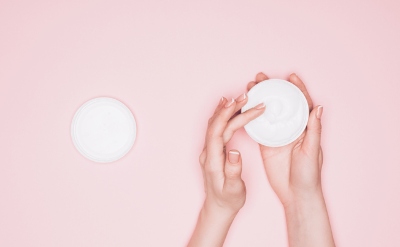Topical clindamycin-tretinoin and topical benzoyl peroxide-adapalene were both shown to improve mild to moderate papulopustular acne, but patients appeared to prefer clindamycin-tretinoin, according to recent research published in the Journal of Drugs in Dermatology.
“Taken together, the findings of this pilot study suggest that [clindamycin-tretinoin] and [benzoyl peroxide-adapalene] have similar efficacy in the treatment of mild to moderate papulopustular acne,” Roland Aschoff, MD, of the Department of Dermatology at the University Hospital Carl Gustav Carus, Technical University Dresden, in Dresden, Germany, and colleagues wrote in their study. “However, [clindamycin-tretinoin] was shown to be better tolerated than [benzoyl peroxide-adapalene], both by medical and subject evaluation. For these reasons, [clindamycin-tretinoin] can be considered an effective and generally well tolerated treatment option.”
Aschoff and colleagues analyzed 20 patients with mild or moderate acne vulgaris who applied clindamycin 1%-tretinoin 0.025% to one side of their face and benzoyl peroxide 2.5%-adapalene 0.1% to the other each day over a period of 21 days. They evaluated transepidermal water loss (TEWL) as a primary outcome and skin moisture content measurement, Investigators' Global Assessment (IGA), and 4-point Likert scale subject self-assessments (SSA) as secondary outcomes. SSA included measurements of itching, erythema, burning/stinging, and dryness/scaling. To determine efficacy, Aschoff and colleagues assessed inflammatory and non-inflammatory acneiform lesions at baseline, 7 days, and 21 days. The researchers also had patients complete a Comparative Participant Satisfaction Questionnaire (CPSQ).

The results showed a significant increase in TEWL for the clindamycin-tretinoin group (57.74%, P = .002) and benzoyl peroxide-adapalene group (58.77%, P < .001), with a significant decrease in skin moisture seen for the side of the face where benzoyl peroxide-adapalene was applied (16.47%, P = .02). In the benzoyl peroxide-adapalene results, there was a significant increase in IGA scores for dryness/scaling (P = .014), erythema (P = .027) as well as burning/stinging as measured by SSA (P = .04), but this was not seen in the clindamycin-tretinoin results.
“This evaluation made by the investigator was also reflected in the subjects’ self-perception. Subjects indicated a significant increase of SSA overall and of dryness after one week of use and a significant increase in burning/stinging during the entire study period only for the [benzoyl peroxide-adapalene] -treated hemi-face,” Dr. Aschoff and colleagues wrote.
The researchers noted that current guidelines in Europe recommend benzoyl peroxide-adapalene instead of clindamycin-tretinoin for treatment of mild or moderate acne vulgaris. “The rationale for this is the potential risk of developing antibiotic resistance and sensitization to clindamycin,” they said. “However, the risk of developing antibiotic resistance to clindamycin when used over a longer period is unknown.”
Photo Credit: Getty Images











